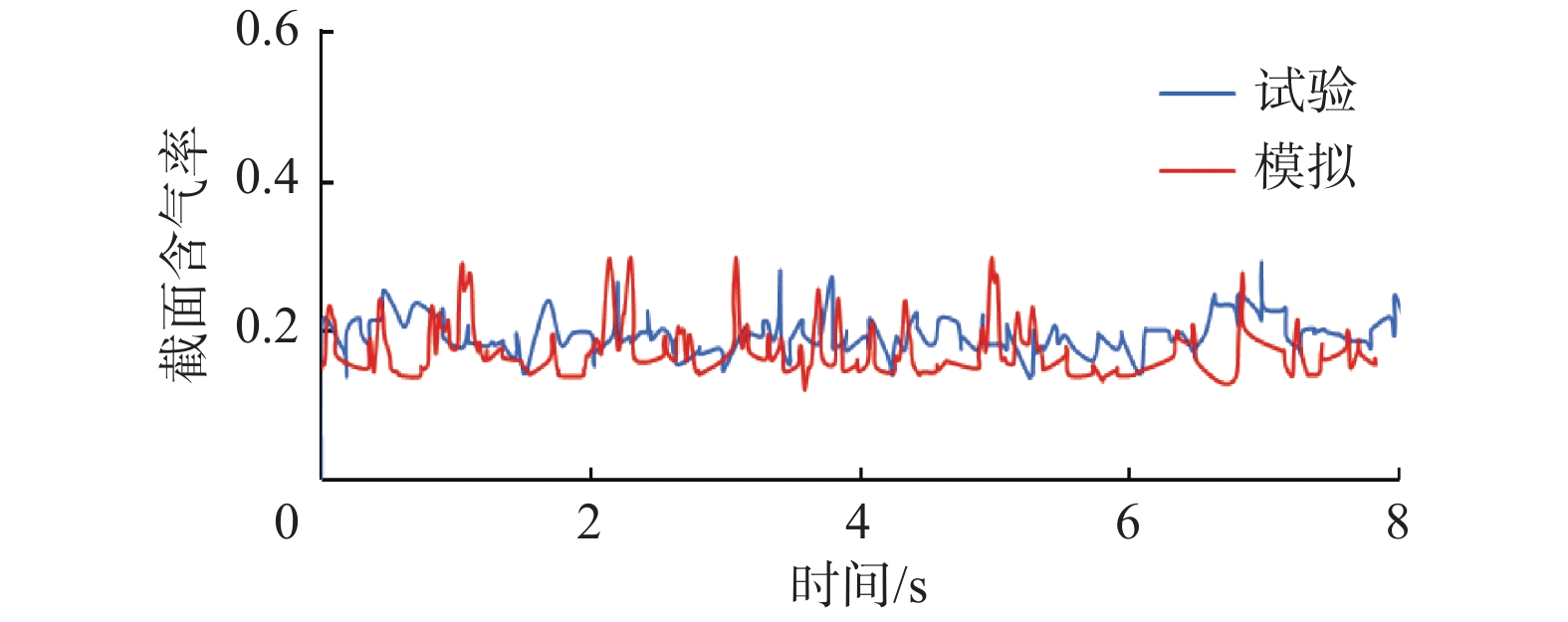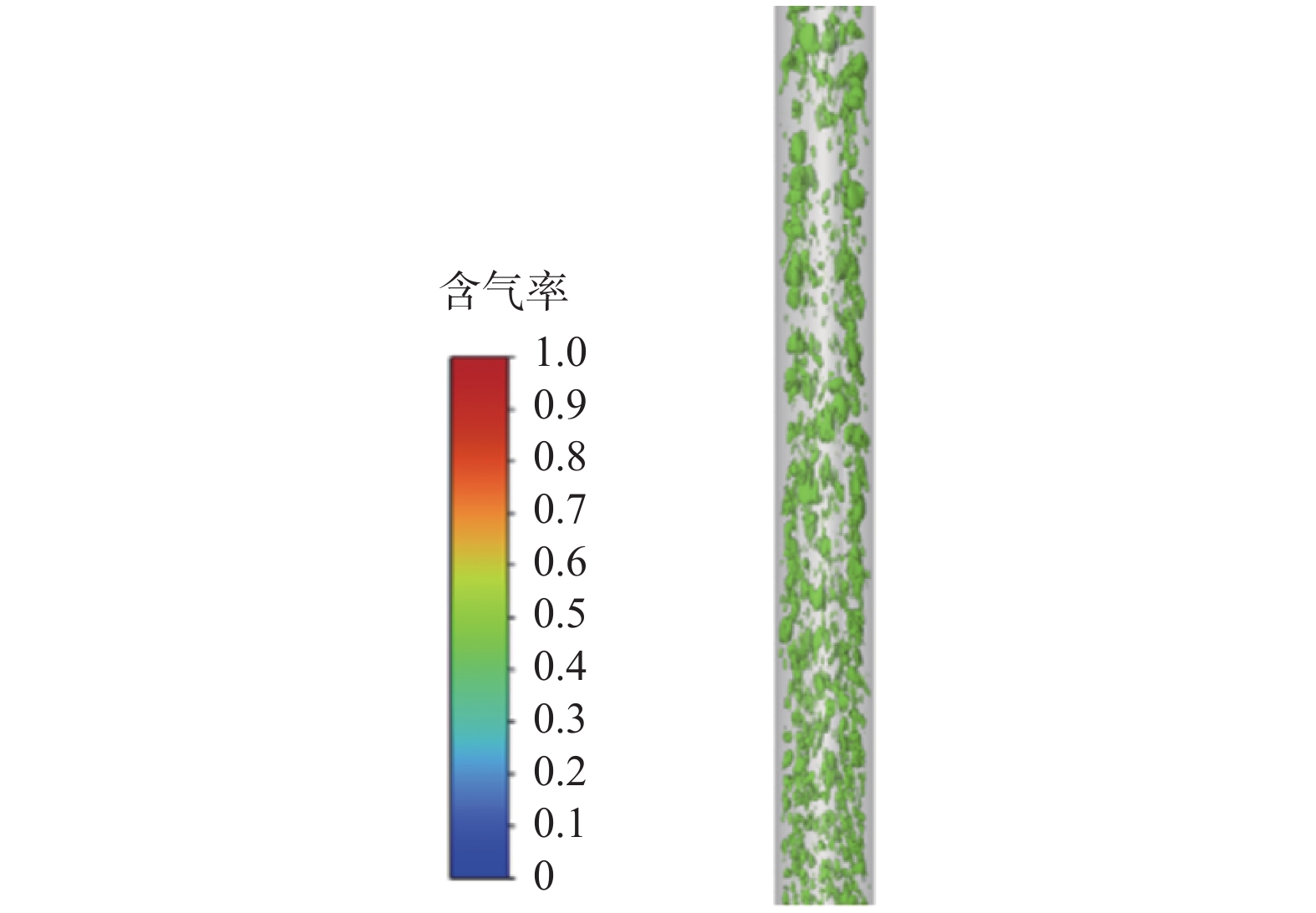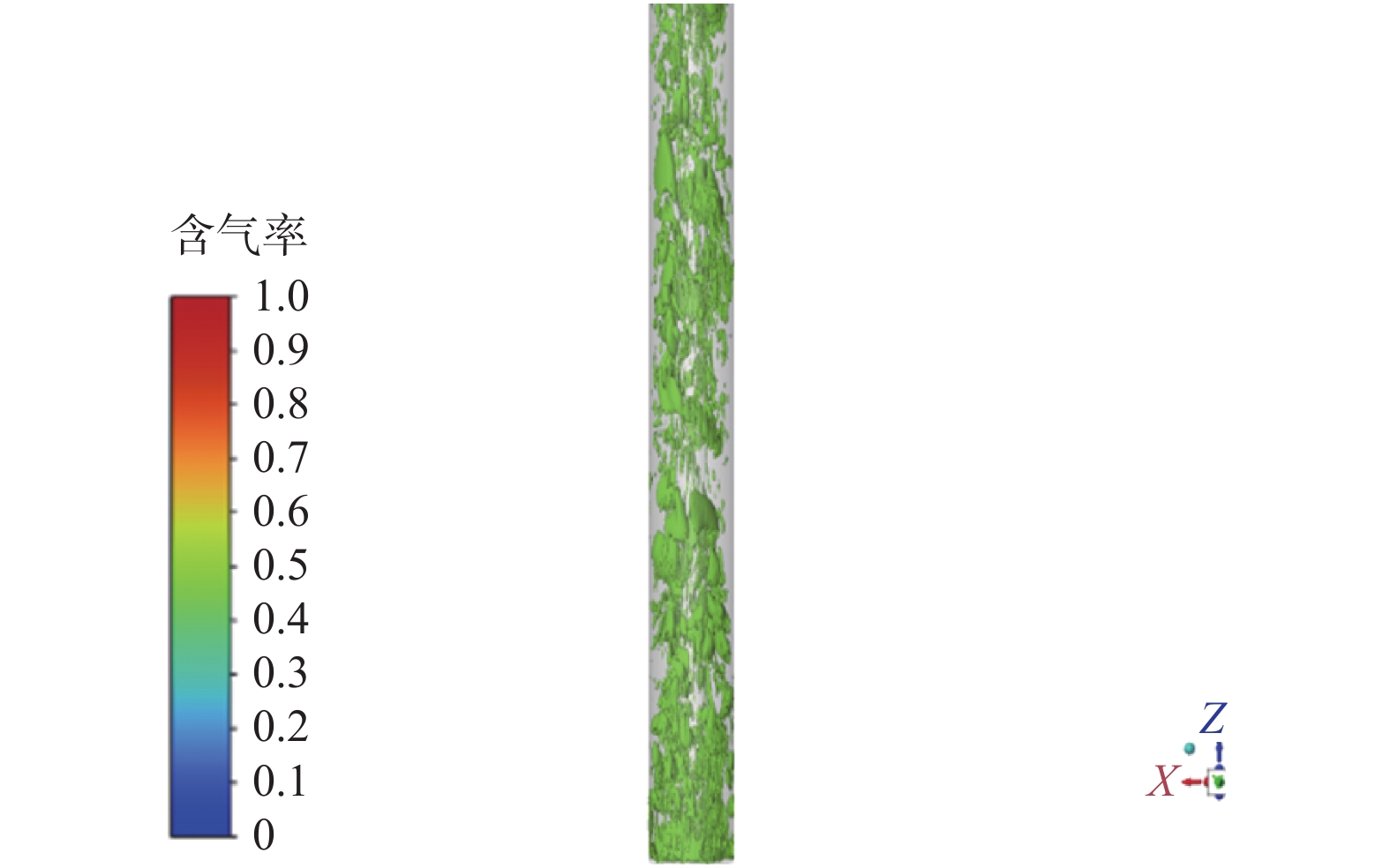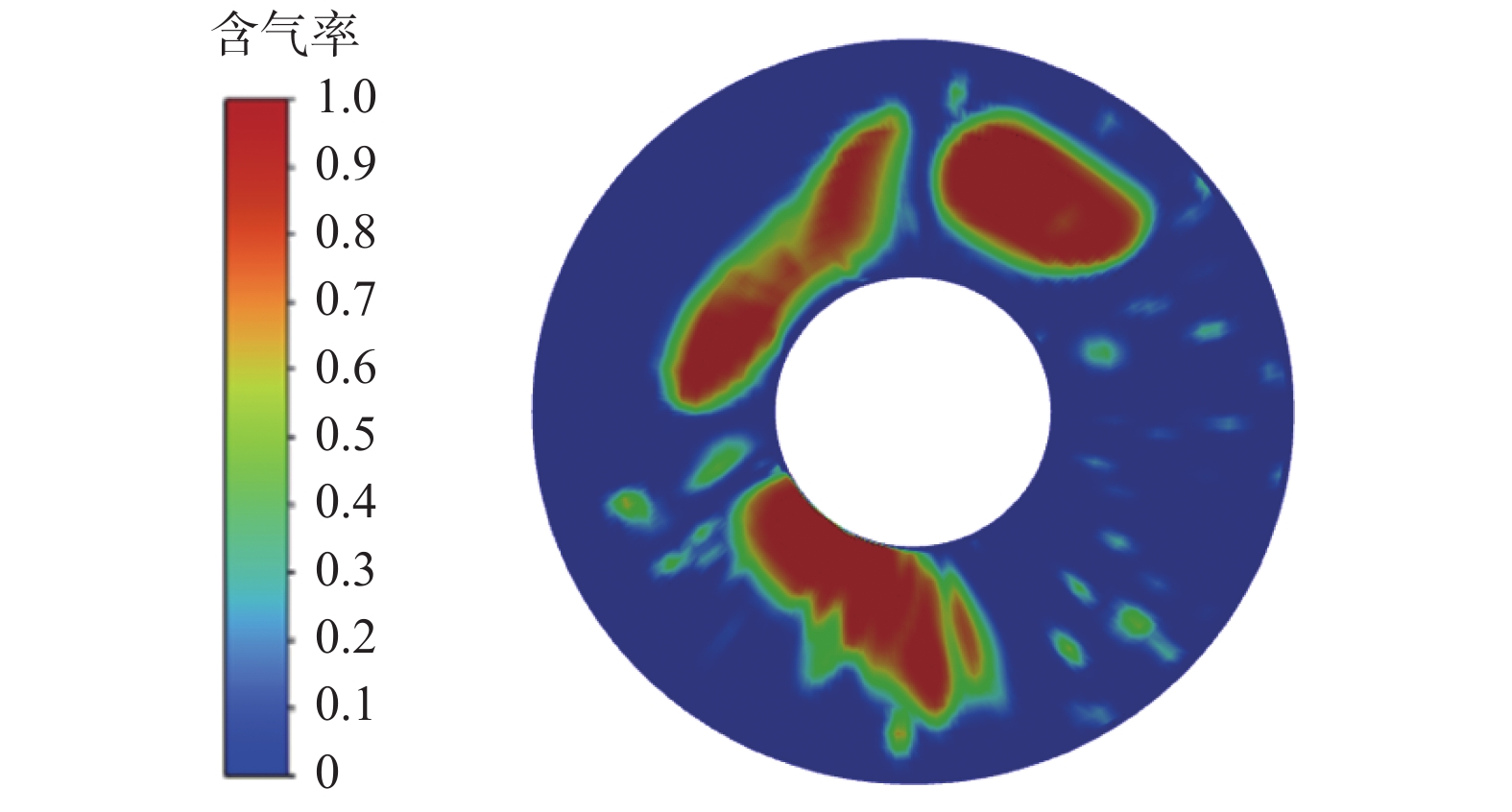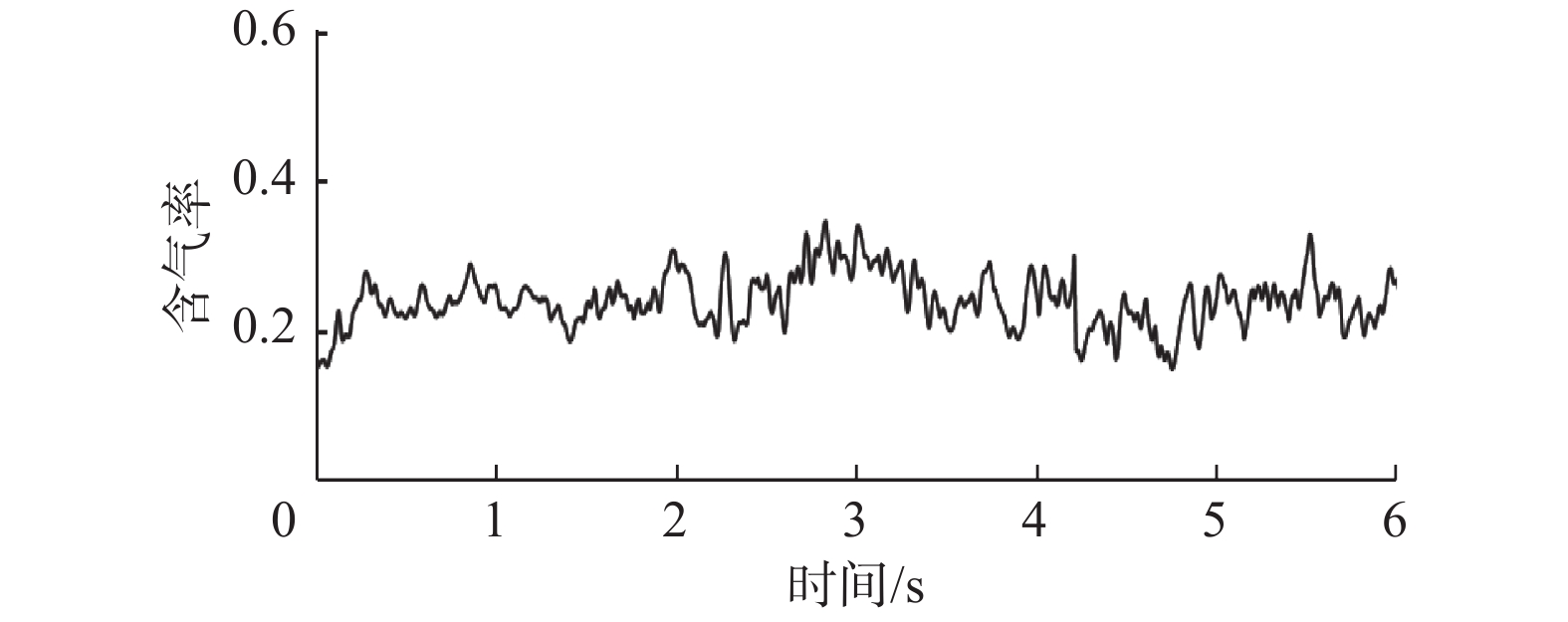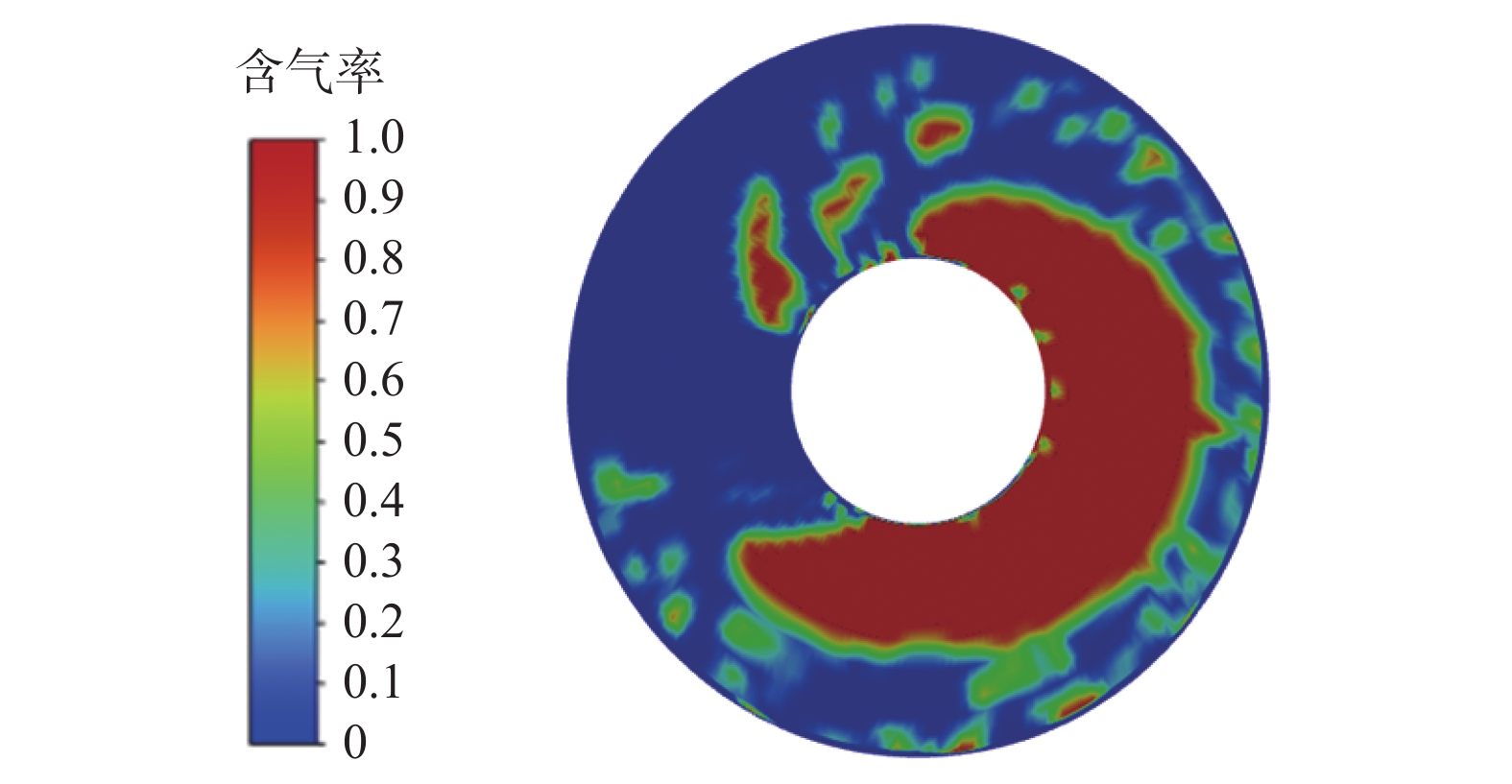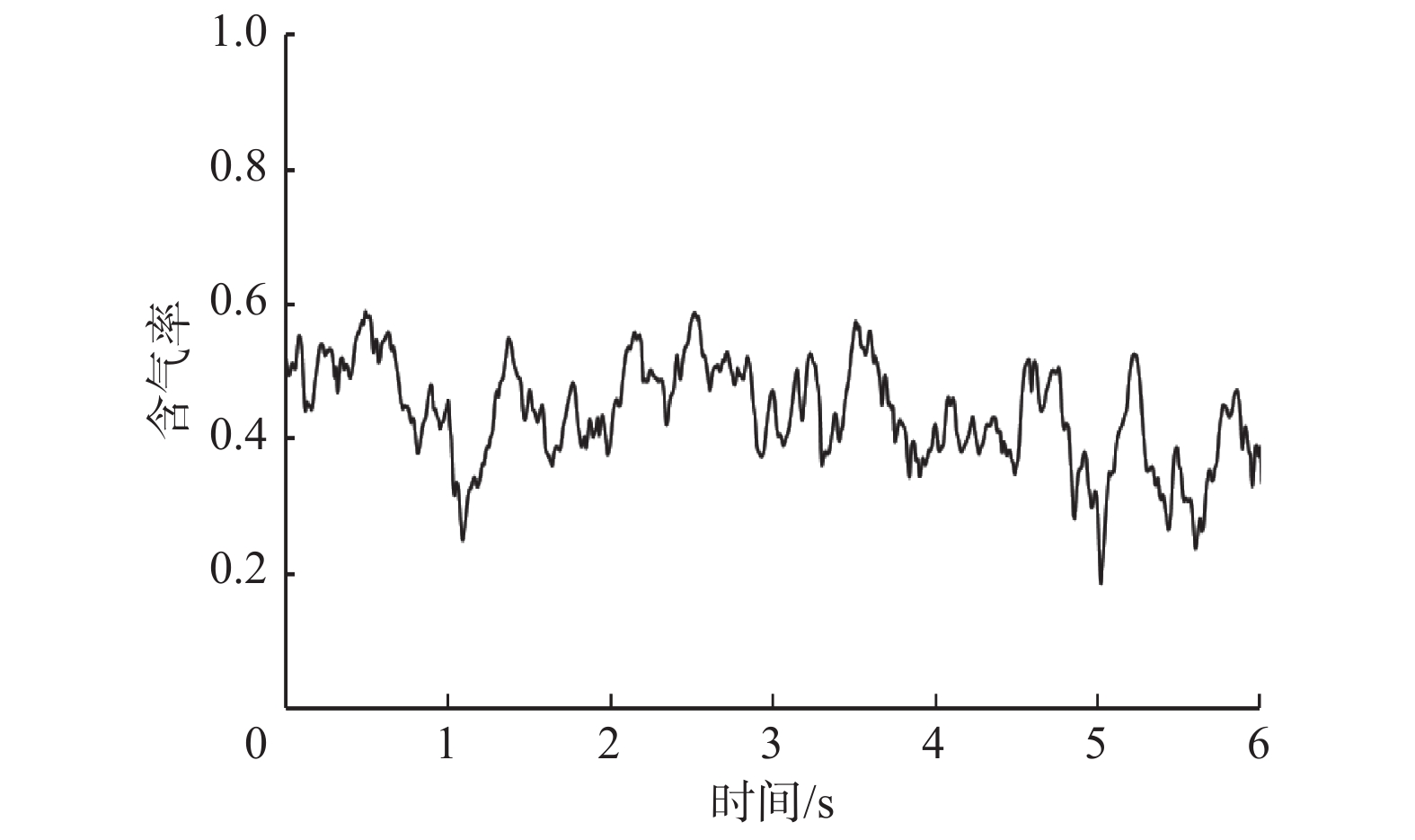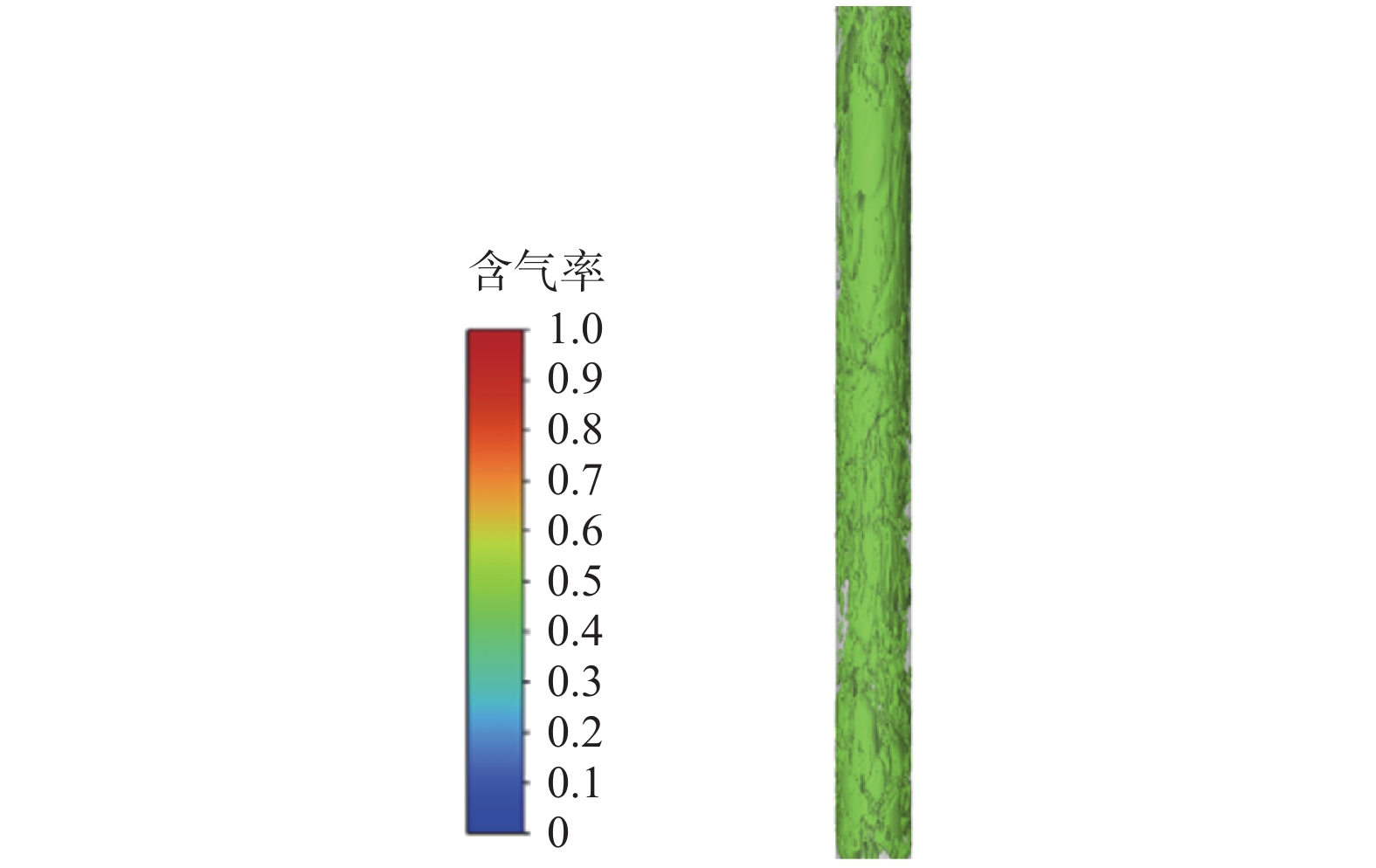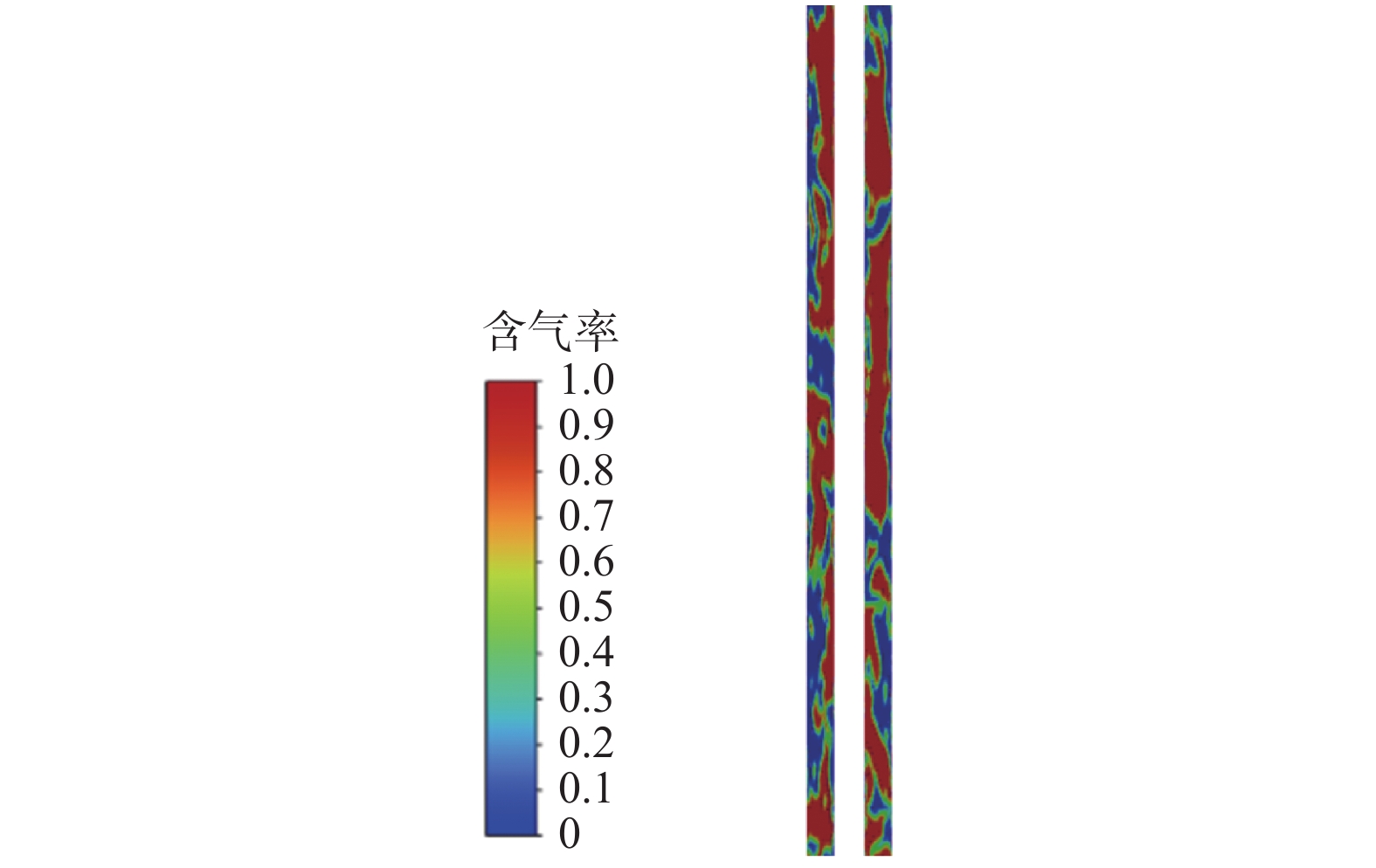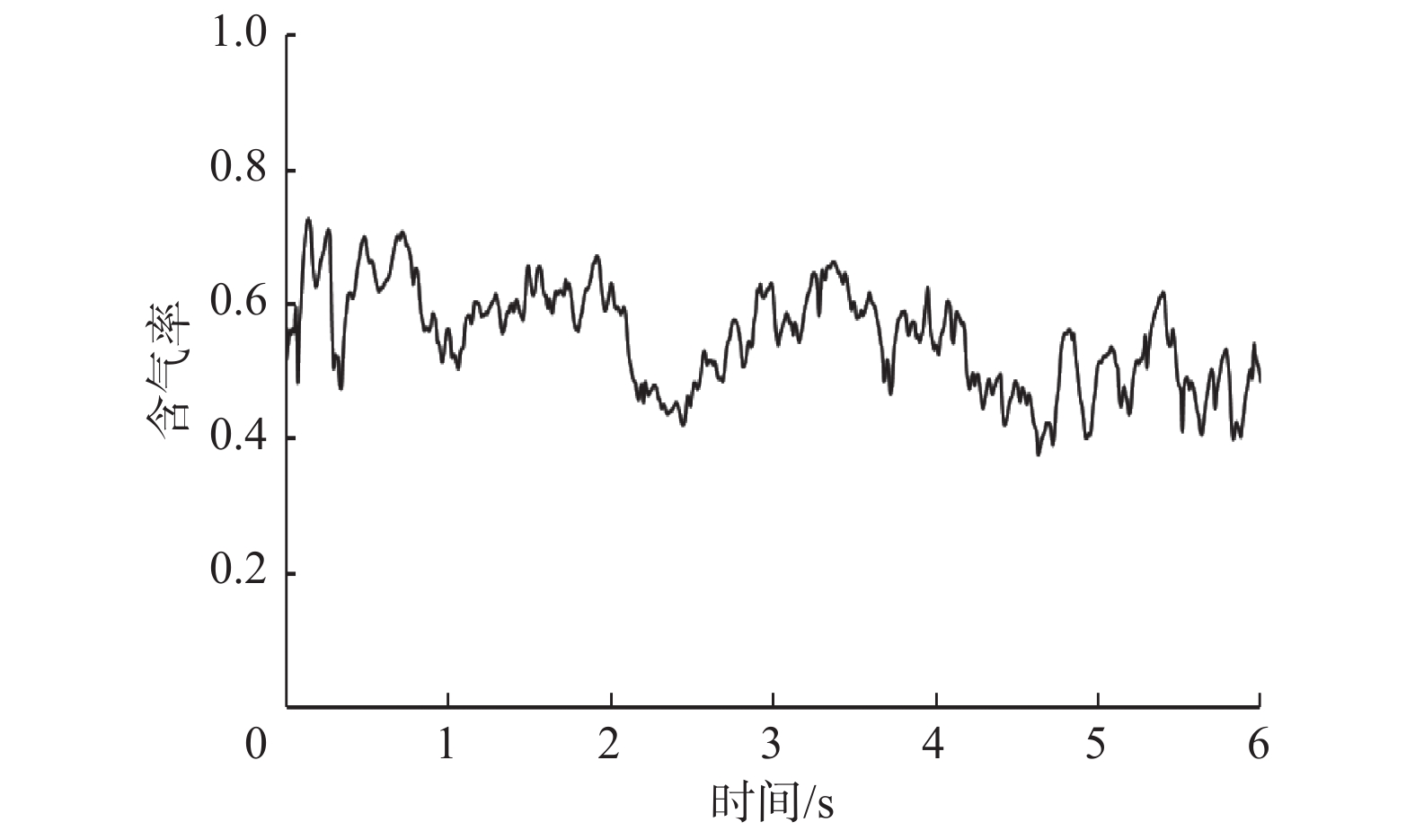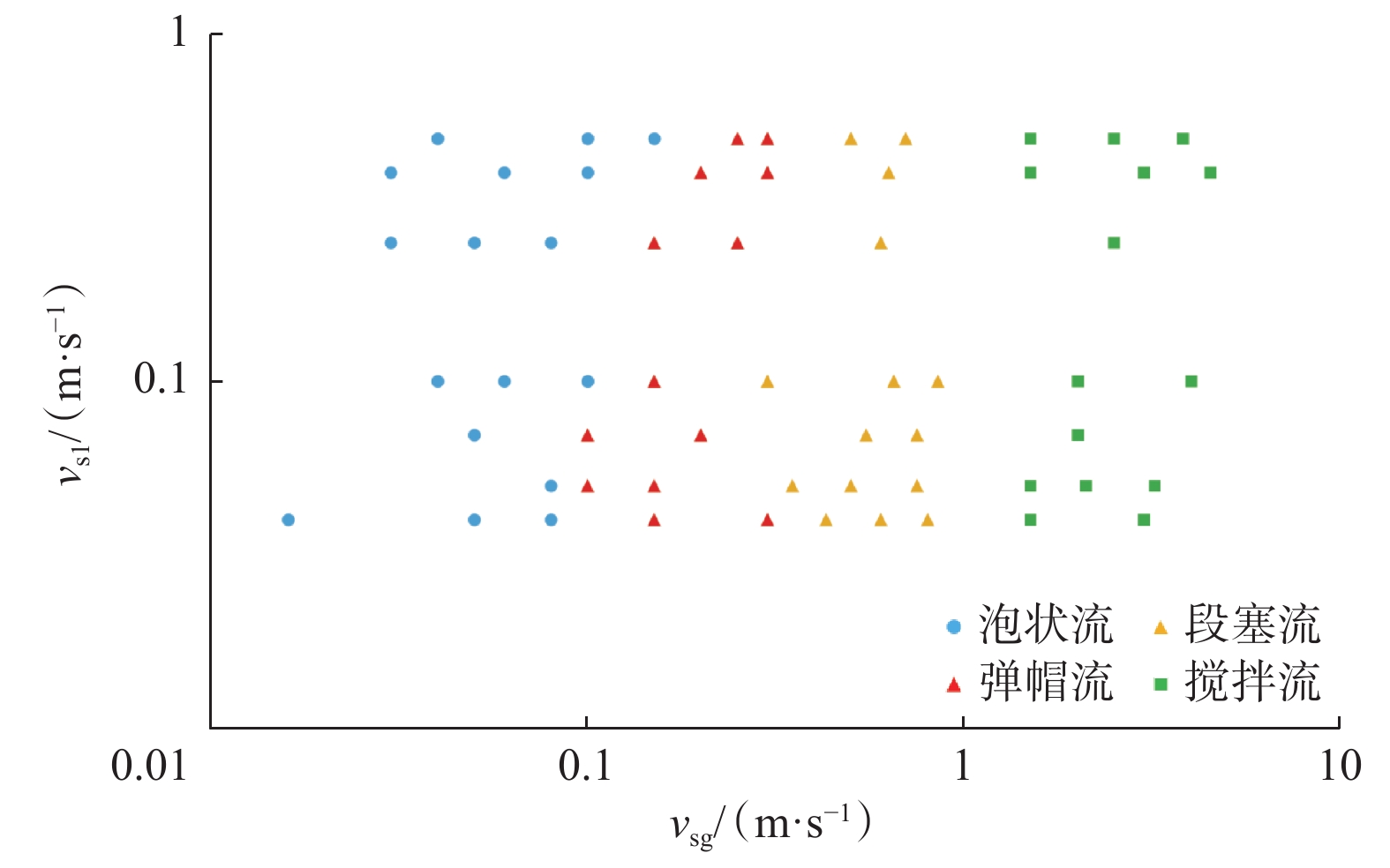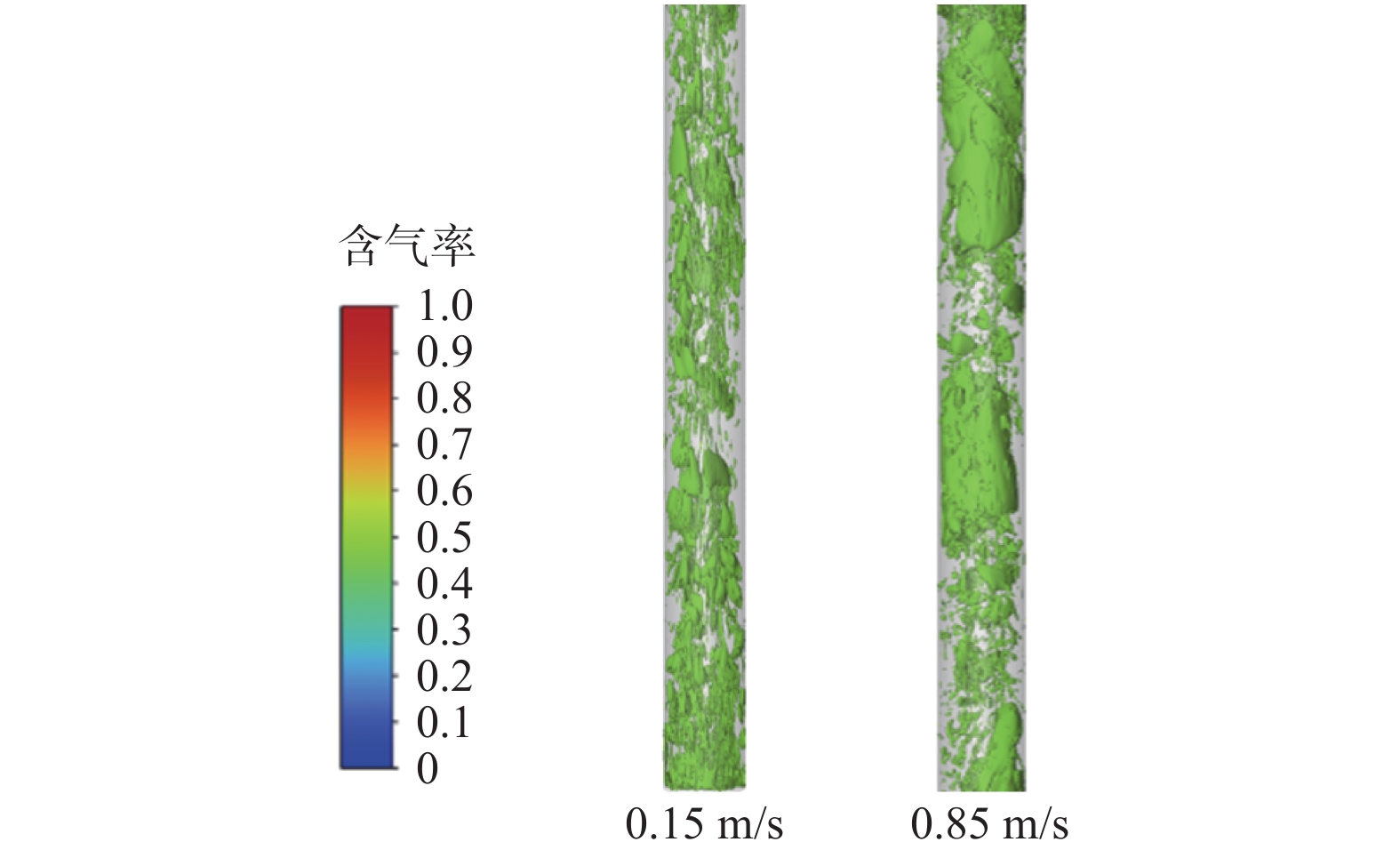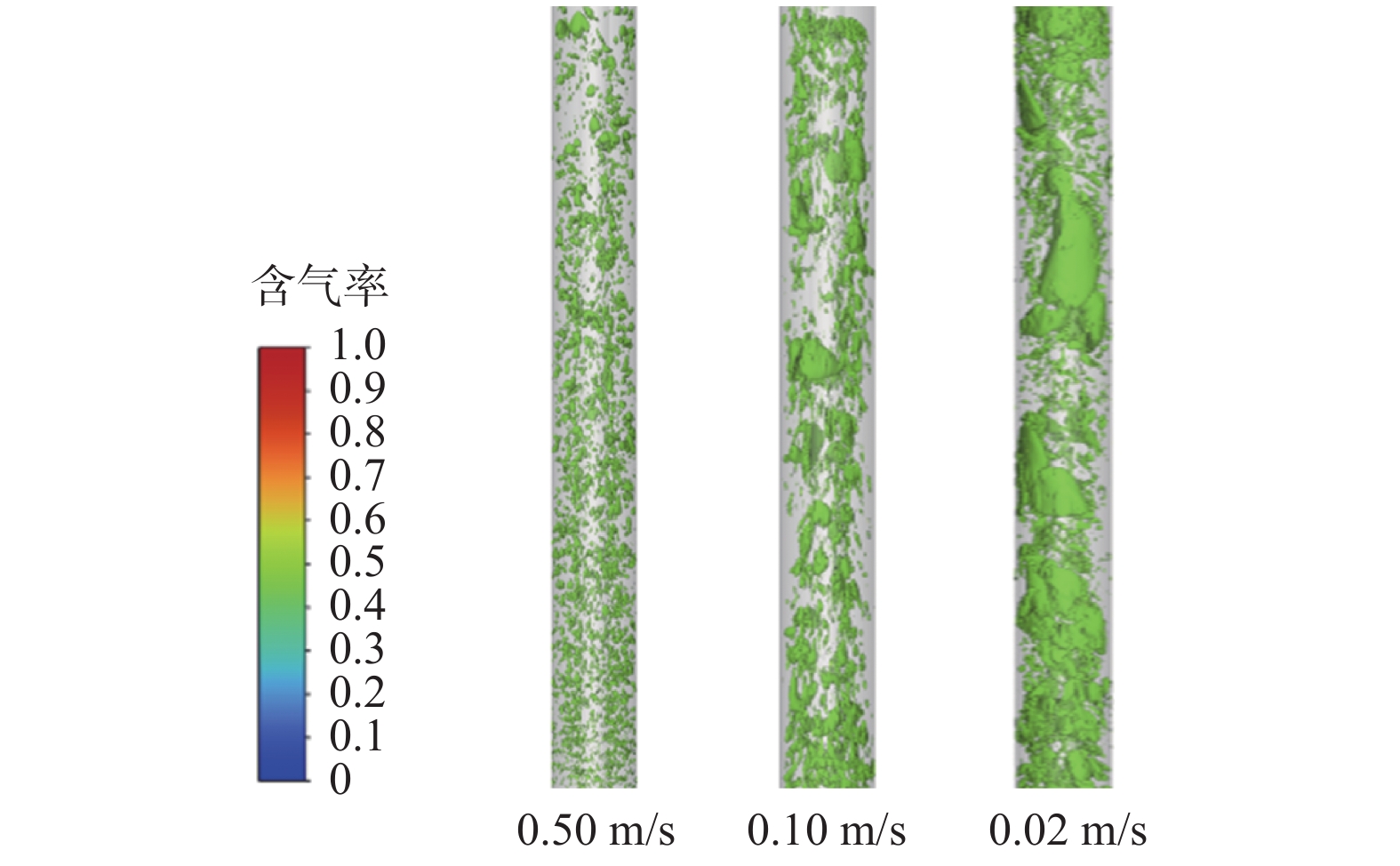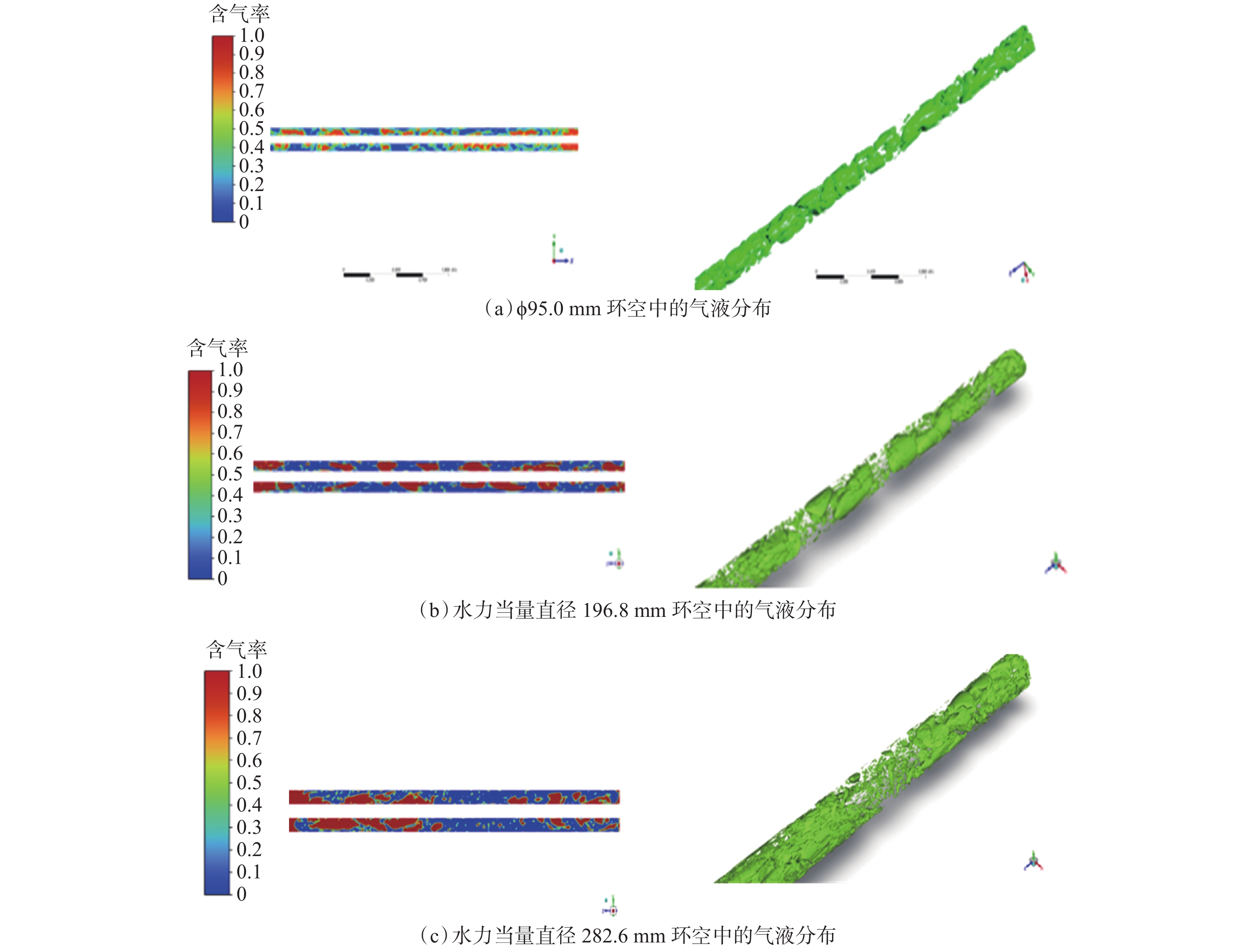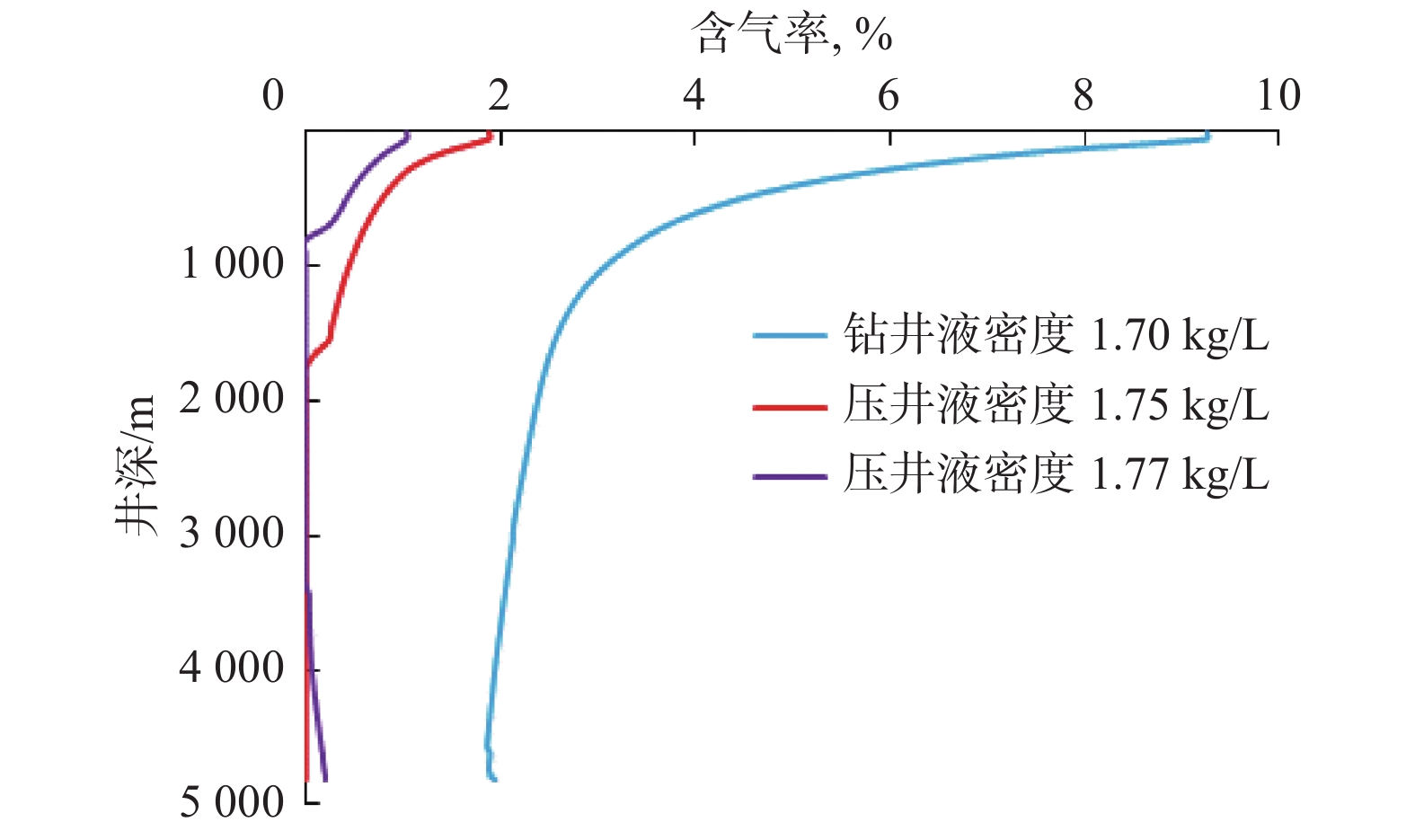Numerical Simulation of Gas-Liquid Two-Phase Flow Pattern in Large Annulus of Deep Well
-
摘要:
深层和超深层油气井井身结构复杂且部分井眼尺寸较大,钻进过程中容易遇到异常压力,导致安全作业窗口变窄。当发生气侵时,井筒环空内会形成气液两相流,传统的基于常规尺寸流型转化理论的压井方法容易超出窄窗口,导致涌漏交替,从而错过最佳压井时机。为解决这一问题,基于VOF模型开发了一种适用于大尺寸环空气液两相流动的数值模拟方法,并采用文献数据验证了其准确性。在水力当量直径196.8 mm环空内进行的气液两相流动模拟中,识别出泡状流、弹帽流、段塞流和搅拌流等4种流型,分析了其特征,并据此绘制了气液两相流流型图,建立了流型转化判据,揭示了环空尺寸对流型转化的影响规律。研究结果表明,与常规尺寸环空相比,大尺寸环空中泡状流的范围扩大,且在泡状流与段塞流之间存在过渡流型——弹帽流,各流型转化边界均有不同程度的右移。由于常规尺寸环空更容易发生气泡聚并形成泰勒泡,压井操作困难,因此,根据常规尺寸环空流型转化判据为大尺寸环空设计的压井参数往往偏大。相比之下,基于新判据设计的压井参数能够更好地适应窄窗口和大尺寸井眼的压井需求,提高了压井的效率和安全性。
Abstract:In deep and ultra-deep oil and gas wells, abnormal pressure is often encountered while drilling due to their complex casing program and larger borehole sizes, which results in a narrowed safe operating window. When gas intrusion occurs, a gas-liquid two-phase flow forms in the annulus of the wellbore. Conventional well killing methods based on flow pattern transition theories of conventional annulus sizes are prone to exceeding this narrow window, leading to alternating influx and loss and therefore the optimal well killing timing is missed. To address this issue, a numerical simulation method for gas-liquid two-phase flow in large-size annulus was developed using the volume of fluid (VOF) model and was verified with literature data for accuracy. In the simulation of gas-liquid two-phase flow in an annulus with a hydraulic equivalent diameter of 196.8 mm, four flow patterns including bubble flow, cap bubble flow, slug flow, and churn flow were identified and analyzed. A gas-liquid flow pattern map was created, and criteria for flow pattern transitions were established, revealing the influence of annulus size on flow pattern transitions. The results indicate that compared with conventional annulus size, the range of bubble flow expands in larger annuli, with a transitional flow pattern, namely cap bubble flow occurring between bubble and slug flows. The boundaries for flow pattern transitions shift to the right to some certain degree. In conventional annulus size, bubble coalescence and the formation of Taylor bubbles are common, making well killing operations more challenging. Consequently, well control parameters designed for large annuli tend to be bigger. On the contrary, the well control parameters designed based on the new criteria meet the requirements of well killing better in narrow windows and large borehole sizes, thereby improving the efficiency and safety of well killing operations.
-
-
表 1 数值模型流体的物性参数
Table 1 Physical properties parameters of fluid for numerical simulation
流体 密度/(kg·m−3) 黏度/(mPa·s) 表面张力/(N·m−1) 水 998.2 1.003 0.072 空气 1.225 1.798×10−2 表 2 不同工况下的数值模拟结果与试验结果
Table 2 Comparison between numerical simulation results and experimental data under different workingconditions
工况 气相表观
速度/(m·s−1)液相表观
速度/(m·s−1)数值模拟流型 试验流型 a 0.125 0.025 泡状流 泡状流 b 0.150 0.030 泡状流 泡状流 c 0.150 0.100 弹帽流 弹帽流 d 1.000 0.030 搅拌流 搅拌流 表 3 液相表观流速为0.05 m/s时,不同气相表观流速下流型模拟结果
Table 3 Flow pattern simulation results under different apparent gas-phase flow velocities when apparent liquid-phase flow velocity is 0.05 m/s
液相表观速度/(m·s−1) 气相表观速度/(m·s−1) 数值模拟流型 0.05 0.08 泡状流 0.15 弹帽流 0.85 段塞流 2.10 搅拌流 表 4 气相表观流速为0.15 m/s时,不同液相表观流速下流型模拟结果
Table 4 Flow pattern simulation results under different apparent liquid-phase flow velocities when apparent gas-phase flow velocity is 0.15 m/s
气相表观速度/(m·s−1) 液相表观速度/(m·s−1) 数值模拟流型 0.15 0.50 泡状流 0.10 弹帽流 0.02 段塞流 -
[1] SADATOMI M, SATO Y, SARUWATARI S. Two-phase flow in vertical noncircular channels[J]. International Journal of Multiphase Flow, 1982, 8(6): 641–655. doi: 10.1016/0301-9322(82)90068-4
[2] KELESSIDIS V C, DUKLER A E. Modeling flow pattern transitions for upward gas-liquid flow in vertical concentric and eccentric annuli[J]. International Journal of Multiphase Flow, 1989, 15(2): 173–191.
[3] 陈家琅,石在虹,许剑锋. 垂直环空中气液两相向上流动的流型分布[J]. 大庆石油学院学报,1994,18(4):23–26. CHEN Jialang, SHI Zaihong, XU Jianfeng. Flow patterns of gas-liquid two-phase upward flow in vertical annuli[J]. Journal of Daqing Petroleum Institute, 1994, 18(4): 23–26.
[4] 林英松,陈庭根,李相方. 垂直环空气液两相流流型的实验研究[J]. 石油大学学报(自然科学版),1996,20(3):29–31. LIN Yingsong, CHEN Tinggen, LI Xiangfang. Experimental study of gas-liquid two-phase flow in vertical annular space[J]. Journal of the University of Petroleum, China(Edition of Natural Science), 1996, 20(3): 29–31.
[5] 张军,陈听宽,金友煌. 环空管内气液两相流流型研究进展[J]. 油气井测试,1999,8(4):63–68. ZHANG Jun, CHEN Tingkuan, JIN Youhuang. The progress of studies on flow pattern of gas-liquid two phase flow in the annulus[J]. Well Testing, 1999, 8(4): 63–68.
[6] ISSA R I. Prediction of turbulent, stratified, two-phase flow in inclined pipes and channels[J]. International Journal of Multiphase Flow, 1988, 14(2): 141–154. doi: 10.1016/0301-9322(88)90002-X
[7] NEWTON C H, BEHNIA M. Numerical calculation of turbulent stratified gas–liquid pipe flows[J]. International Journal of Multiphase Flow, 2000, 26(2): 327–337. doi: 10.1016/S0301-9322(99)00010-5
[8] 赵铎. 水平管内气液两相流流型数值模拟与实验研究[D]. 青岛:中国石油大学(华东),2007. ZHAO Duo. Numerical simulation and experiment research on flow pattern of gas-liquid flow in horizontal pipe[D]. Qingdao: China University of Petroleum(East China), 2007.
[9] 彭壮,廖锐全,汪国琴,等. 高气液流速下垂直管两相流实验及数值模拟研究[J]. 油气田地面工程,2016,35(3):41–44. doi: 10.3969/j.issn.1006-6896.2016.3.013 PENG Zhuang, LIAO Ruiquan, WANG Guoqin, et al. Experimental and numerical simulation study on two phase flow in vertical pipe at high gas-liquid flow rates[J]. Oil-Gas Field Surface Engineering, 2016, 35(3): 41–44. doi: 10.3969/j.issn.1006-6896.2016.3.013
[10] 王海燕,王春升,李玉星,等. 气液两相流流型的判别方法[J]. 油气储运,2019,38(7):772–777. WANG Haiyan, WANG Chunsheng, LI Yuxing, et al. Flow-pattern-prediction models used for gas-liquid two-phase flow[J]. Oil & Gas Storage and Transportation, 2019, 38(7): 772–777.
[11] 张馨玉. 介质、管径及倾角对管内气液两相流型影响的数值模拟[D]. 长春:东北电力大学,2019. ZHANG Xinyu. Numerical simulation on effect of medium, diameter and angle on gas-liquid two-phase flow pattern in tubes[D]. Changchun: Northeast Electric Power University, 2019.
[12] 邱小雪,戴家才,陈猛,等. 基于VOF对低产积液气井流动特征的数值模拟[J]. 断块油气田,2020,27(5):619–623. QIU Xiaoxue, DAI Jiacai, CHEN Meng, et al. Numerical simulation of the flow characteristics in low-yield and liquid loading gas well based on VOF[J]. Fault-Block Oil & Gas Field, 2020, 27(5): 619–623.
[13] 俞强强,施红辉,董若凌,等. 竖直上升圆管内气液两相流流型特性的数值模拟[J]. 浙江理工大学学报(自然科学版),2022,47(3):397–404. YU Qiangqiang, SHI Honghui, DONG Ruoling, et al. Numerical simulation of flow pattern characteristics of gas-liquid two-phase flow in vertical rising pipes[J]. Journal of Zhejiang Sci-Tech University(Natural Sciences), 2022, 47(3): 397–404.
[14] 张旭鑫. 垂直环空油基钻井液-气体两相流流型转化规律研究[D]. 青岛:中国石油大学(华东),2020. ZHANG Xuxin. Study on flow pattern transition of oil based drilling fluid-gas two-phase flow in vertical annulus[D]. Qingdao: China University of Petroleum(East China), 2020.
[15] COLMANETTI A R A, de CASTRO M S, BARBOSA M C, et al. Phase inversion phenomena in vertical three-phase flow: Experimental study on the influence of fluids viscosity, duct geometry and gas flow rate[J]. Chemical Engineering Science, 2018, 189: 245–259.
[16] COLMANETTI A R A, de CASTRO M S, BARBOSA M C, et al. Influence of liquid viscosity and geometry on vertical gas/liquid two-phase annular-duct flow[J]. SPE Journal, 2020, 25(6): 3236–3249. doi: 10.2118/200491-PA
[17] 李昊. 超临界条件下井筒环空多相流动规律研究[D]. 青岛:中国石油大学(华东),2015. LI Hao. Study on multi-phase flow in supercritical wellbore annular[D]. Qingdao: China University of Petroleum(East China), 2015.
[18] GRIFFITH P, SNYDER G A. The bubbly-slug transition in a high velocity two phase flow: technical report No. 5003-29[R]. Cambridge: M. I. T. Division of Sponsored Research, 1964.
[19] RADOVCICH N A, MOISSIS R. The transition from two phase bubble flow to slug flow: report No. 7-7673-22[R]. Cambridge: M. I. T. Division of Sponsored Research, 1962.
[20] HARMATHY T Z. Velocity of large drops and bubbles in media of infinite or restricted extent[J]. AIChE Journal, 1960, 6(2): 281–288. doi: 10.1002/aic.690060222
[21] ZUBER N, FINDLAY J A. Average volumetric concentration in two-phase flow systems[J]. Journal of Heat Transfer, 1965, 87(4): 453–468. doi: 10.1115/1.3689137
[22] TAITEL Y, BARNEA D, DUKLER A E. Modelling flow pattern transitions for steady upward gas-liquid flow in vertical tubes[J]. AIChE Journal, 1980, 26(3): 345–354. doi: 10.1002/aic.690260304
[23] OZAWA M, AKAGAWA K, SAKAGUCHI T. Flow instabilities in parallel-channel flow systems of gas-liquid two-phase mixtures[J]. International Journal of Multiphase Flow, 1989, 15(4): 639–657.
[24] DAS G, DAS P K, PUROHIT N K, et al. Flow pattern transition during gas liquid upflow through vertical concentric annuli: part II: mechanistic models[J]. Journal of Fluids Engineering, 1999, 121(4): 902–907. doi: 10.1115/1.2823553
[25] 孙宝江,王雪瑞,孙小辉,等. 井筒四相流动理论在深水钻完井工程与测试领域的应用与展望[J]. 天然气工业,2020,40(12):95–105. doi: 10.3787/j.issn.1000-0976.2020.12.011 SUN Baojiang, WANG Xuerui, SUN Xiaohui, et al. Application and prospect of the wellbore four-phase flow theory in the field of deepwater drilling and completion engineering and testing[J]. Natural Gas Industry, 2020, 40(12): 95–105. doi: 10.3787/j.issn.1000-0976.2020.12.011
[26] SUN Baojiang, GONG Peibin, WANG Zhiyuan. Simulation of gas kick with high H2S content in deep well[J]. Journal of Hydrodynamics, 2013, 25(2): 264–273. doi: 10.1016/S1001-6058(13)60362-5
-
期刊类型引用(5)
1. 刘亚军,魏春明,杨德斌,郭劲松. 基于探地雷达技术的邻井探测与仿真研究. 物联网技术. 2023(02): 42-46 .  百度学术
百度学术
2. 刘修善. 邻井距离解算及防碰评价. 石油学报. 2019(08): 983-989 .  百度学术
百度学术
3. 刘树斌. 法面距离扫描法的漏洞及其完善. 中外能源. 2017(02): 47-51 .  百度学术
百度学术
4. 宗艳波,郑俊华,孙明光. 基于旋转磁场的井间扫描角测量方法. 中国测试. 2016(12): 18-21 .  百度学术
百度学术
5. 宗艳波,王磊,史晓锋. SAGD成对水平井磁导向测距仪研制与应用. 石油学报. 2016(11): 1428-1434 .  百度学术
百度学术
其他类型引用(10)




 下载:
下载:



